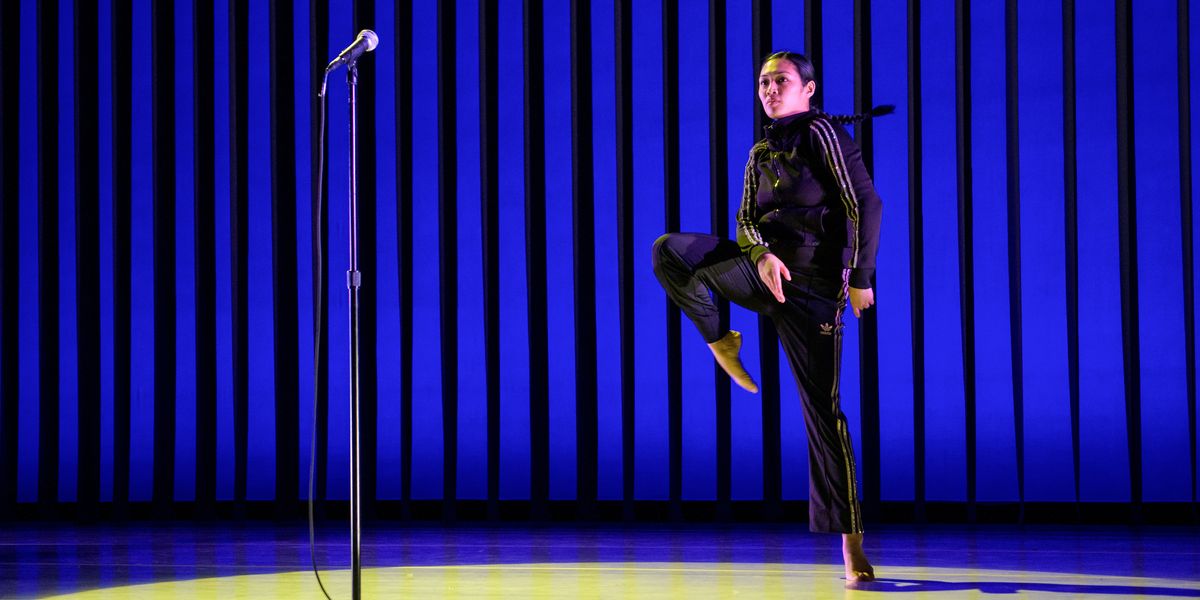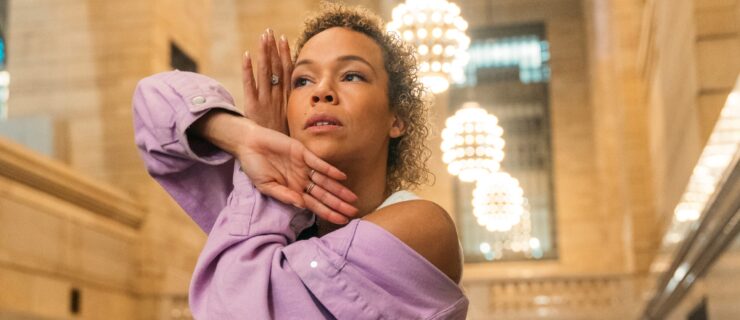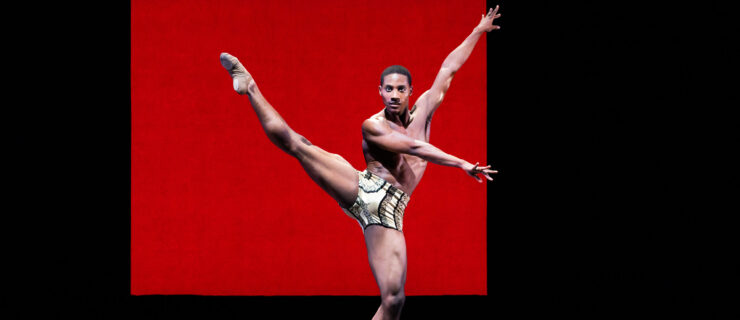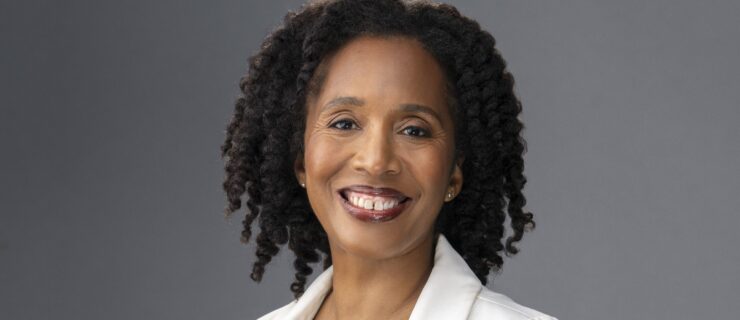Meet the A.I.M Dancer Whose Choreography Kyle Abraham is Investing In
Kyle Abraham’s powerhouse A.I.M has recently been expanding its model. Last spring, the company invited Andrea Miller to create a work, A.I.M’s first commission by a guest choreographer. The program also included pieces by Bebe Miller and Doug Varone—marking a shift from all-Abraham repertory shows.
This fall, for its Joyce season, A.I.M is again trying something new: company member Keerati Jinakunwiphat, who graduated from SUNY Purchase in 2016, is creating a new group work, Big Rings, for six of her A.I.M colleagues.
Big Rings
premieres on a shared program with Trisha Brown’s Solo Olos and solo works by Abraham, including a new one for himself and, on opening night, a solo for Misty Copeland. We recently had the chance to speak with Jinakunwiphat about her inspiration and mentors and what she’s looking forward to about her Joyce choreographic debut.
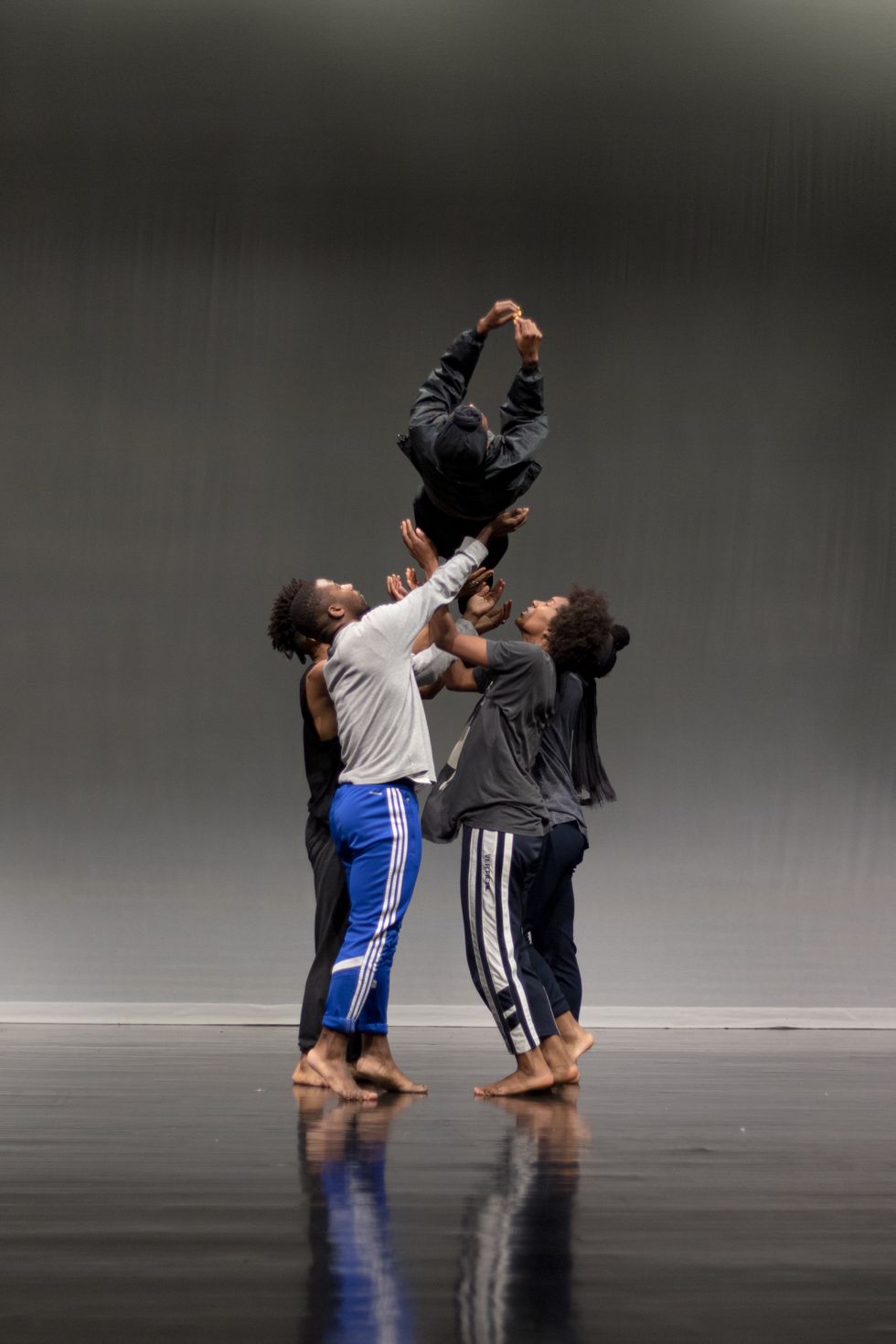
A.I.M dancers in rehearsal for Jinakunwiphat’s Big Rings.
Alice Chacon, Courtesy A.I.M.
How She Got Into Choreography
During her senior year of college at Purchase, Jinakunwiphat says that “having Doug Varone as a composition teacher really did a lot for me. He had so many great tools and guidance, and had us really trust our instincts, and I found that really exciting. I stuck to it from there.”
Since that first foray while an undergraduate, she’s continued to cut her choreographic teeth, making works on her friends and on students back at Purchase and at the Martha Graham School’s summer intensive program. Earlier this summer, she presented a work at Battery Dance Festival, “an all-boys piece that I created for my senior project at school,” she says.
Inspiration from Her Colleagues
For Big Rings, her biggest opportunity yet, Jinakunwiphat is sourcing inspiration from her A.I.M colleagues. “I love the people that I work with, and that has a big part to do with the new piece that I’m making, finding inspiration from them. I genuinely feel like there’s nothing they can’t do.”
Jinakunwiphat’s interest in sports is also an influence: “I really love the teamwork, the high physicality” she says, which she notes are shared characteristics with dance and dancers. “You know how the world kind of sees athletes like superheroes? That’s really how I feel about my teammates and my coworkers. I really want to present them in that way.”
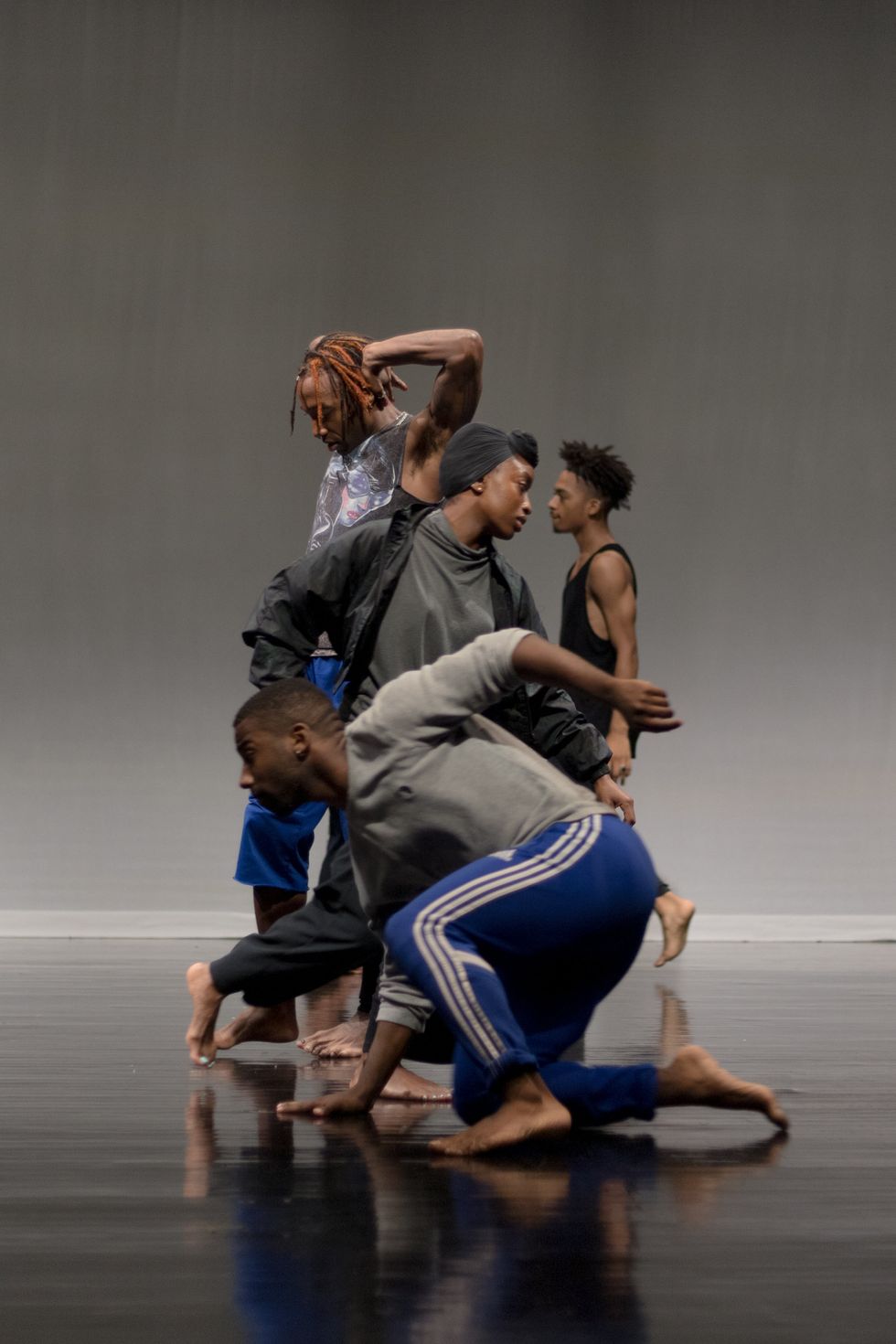
A.I.M dancers in rehearsal for Jinakunwiphat’s Big Rings.
Alice Chacon, Courtesy A.I.M.
Her Joyce Choreographic Debut
As conversations with her design team progress, Jinakunwiphat’s excitement continues to grow. “I just went costume shopping recently with Karen Young, who’s designing for me,” she says, adding, “she’s amazing.”
Jinakunwiphat’s design team includes another frequent A.I.M contributor, lighting designer Dan Scully, who has masterfully lit many Abraham works. And for music, she’s working with Zach Berns, “a friend and collaborator from SUNY Purchase, who edits and manipulates a lot of my music.”
Support from Her Mentors
Varone has remained a choreographic mentor since her Purchase days. “Even now, rehearsing this new piece, I had him come in,” Jinakunwiphat says. “He makes himself so accessible and so supportive.”
Abraham, who approached Jinakunwiphat with the opportunity to create this new work for A.I.M, has also been an ongoing supporter of her choreographic pursuits. He first saw her work in a Dance Gallery Festival presentation in 2017, and attended “as a supportive friend and was really excited by it after, which I was really flattered by,” she says.
After her Dance Gallery Festival engagement, he went to Purchase to see a piece she was commissioned to do there. About a year after first seeing her work, while the company was on tour in Akron, OH, Abraham asked her to make a work for A.I.M. Remembering the moment he posed the question, she says, “I definitely cried.”
Jinakunwiphat notices that she and Abraham “use a few of the same tools, like manipulating material.” For her new piece, she notes Abraham has given her space to exercise full agency over her creative process, while also making himself available to offer feedback and support. “He wants to make sure that I feel like I’m in control of everything, and it’s definitely my piece,” she says.
As noted in The New York Times, Abraham has refused invitations to have his work included on all-male mixed-repertory programs, remaining committed to elevating the work of female choreographers. By offering Jinakunwiphat the opportunity to test her own dance-making skills and show her work at a leading New York dance house, Abraham continues to walk the talk.
